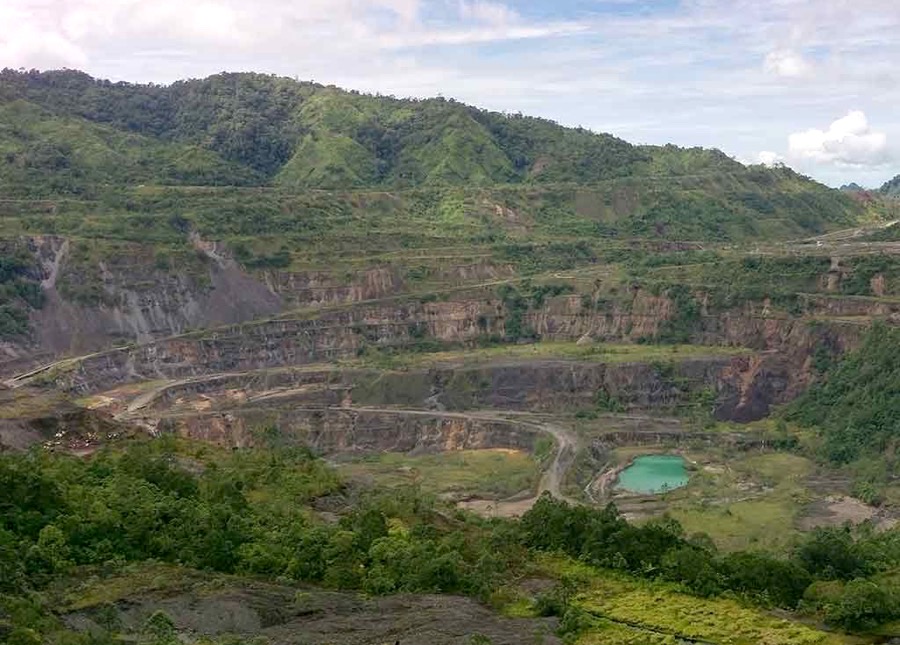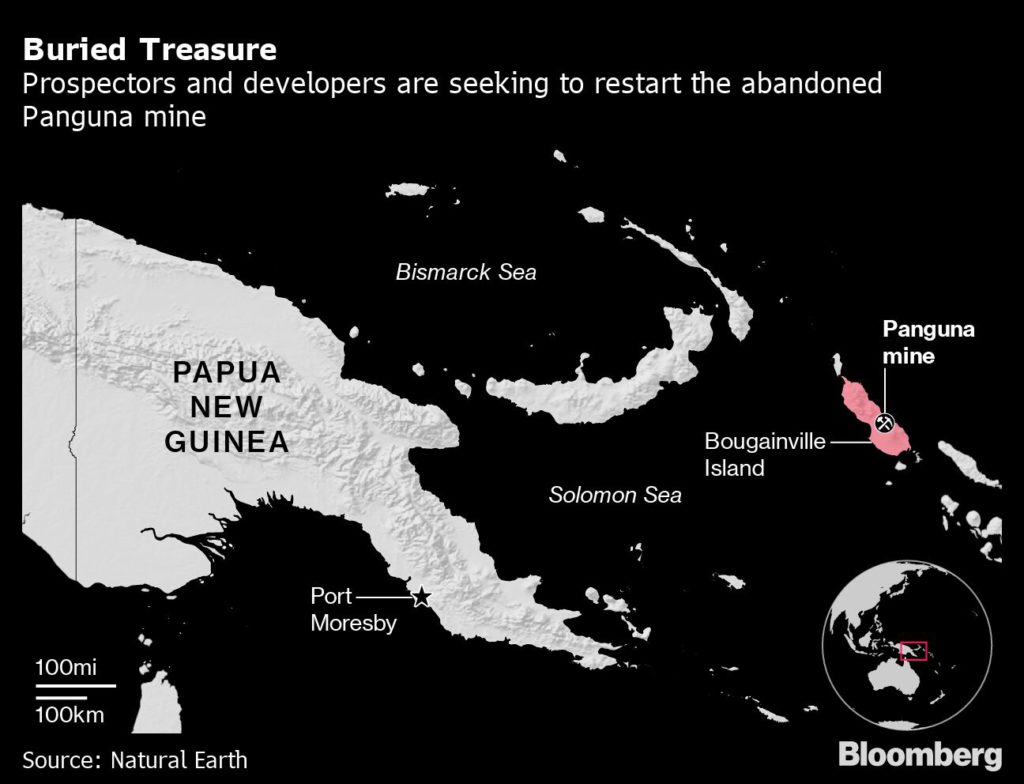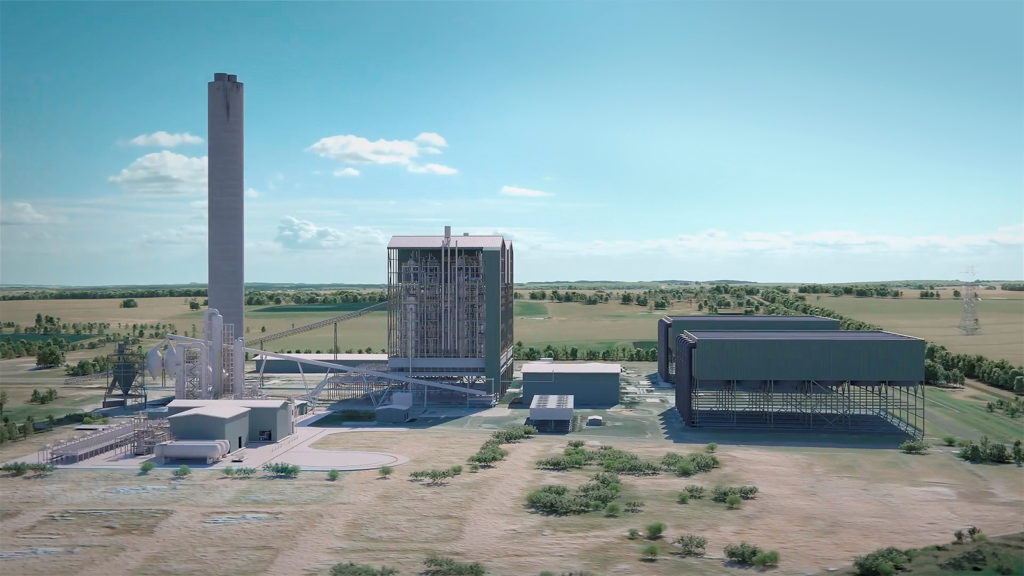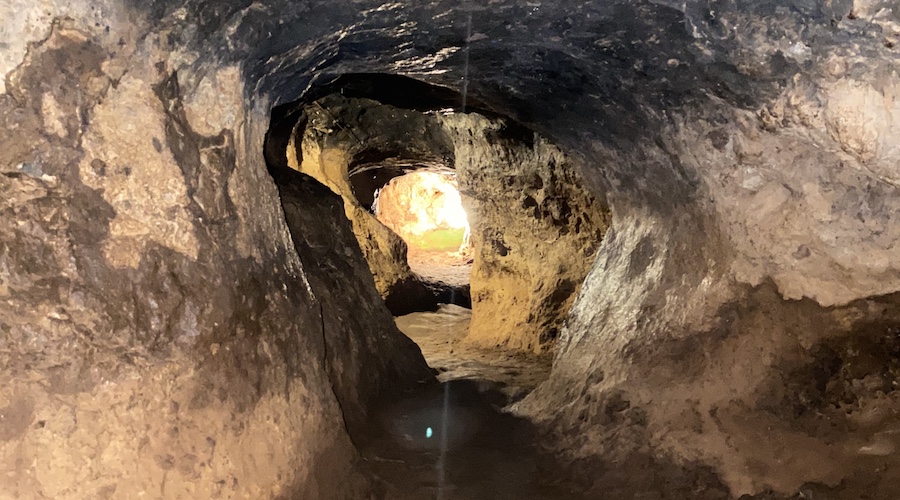Study to assess benefits of Hartlepool SMR plant
23 May 2024
X-energy and Cavendish Nuclear have commissioned Teesside University to undertake a study of the potential regional benefits and economic impacts of a proposed power plant in Hartlepool, UK, based on X-energy's Xe-100 high temperature gas-cooled reactor.
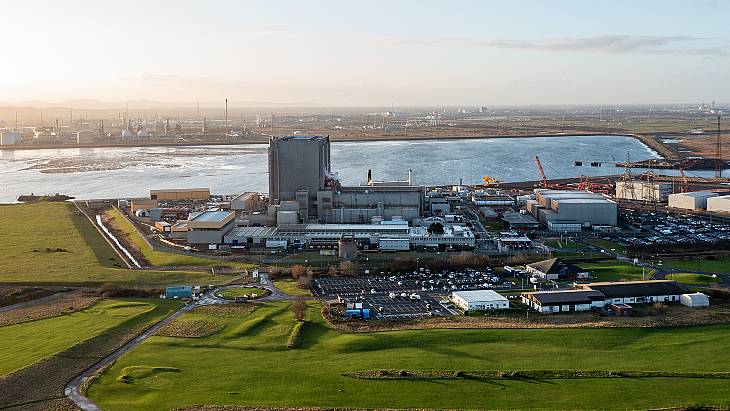 Hartlepool is now due to operate until 2026 (Image: EDF)
Hartlepool is now due to operate until 2026 (Image: EDF)The assessment - including jobs, skills, supply chain contracts, and investment - will be led by Matthew Cotton, Professor of Public Policy and will utilise expertise from Teesside University International Business School and its School of Social Sciences, Humanities & Law. It will include a review of available socio-economic data and engagement with local stakeholders including government officials, community leaders and sector experts.
The study will also examine national impacts, including contributions to meeting the UK government's net-zero targets. This assessment - which will begin immediately and be completed later this year - will include the additional benefits from industrial decarbonisation applications and the manufacture of other clean energy products, such as hydrogen and aviation fuel.
According to X-energy and Cavendish, early estimates indicate a 12-reactor X-energy plant at Hartlepool would "directly employ hundreds of people in operations and a peak construction workforce of several thousand in addition to the employment benefits in the wider supply chain".
The study is part of a GBP6.68 million (USD8.5 million) programme funded by X-energy, and by the UK government which awarded the firms GBP3.34 million in April this year from the Department of Energy Security and Net Zero's Future Nuclear Enabling Fund.
The Xe-100 is a Generation IV advanced reactor design which X-energy says is based on decades of HTGR operation, research, and development. Designed to operate as a standard 320 MWe four-pack power plant or scaled in units of 80 MWe, it is engineered to deliver reliable and load-following grid-scale power to electricity systems and to pair seamlessly with renewables. At 200 MWt of 565°C steam, the Xe-100 is also suitable for other power applications including mining and heavy industry.
X-energy and Cavendish - a wholly-owned subsidiary of Babcock International - are proposing to develop a 12-reactor plant at the Hartlepool site on Teesside in the northeast of England, to be operational by the early 2030s. The companies plan to build a fleet of up to 40 Xe-100 reactors in the UK.
Carol Tansley, X-energy's vice president of projects and UK market leader, added: "Our nuclear power station project represents a fantastic economic and employment opportunity in addition to the vital contribution it makes to energy security and decarbonisation. We want to understand from the outset how best to help our potential host community and the surrounding area capitalise on the benefits it will bring.
"Teesside University is ideally placed to help us. The team has huge experience of similar exercises in the past, and excellent links with the local community and business sector."
Cavendish Nuclear Managing Director Mick Gornall added: "A regional economy which hosts a project like this can experience a rise in productivity and growth. Creating supply chains and other infrastructure in local and neighbouring areas can permanently enhance economic capacity. Beyond Hartlepool, we estimate a national fleet roll out of 40 Xe-100s could bring around GBP20 billion of investment into the UK."
Teesside University's Professor Cotton said: “A core principle of our research is to work with communities to address regional disparities and drive social impact for regions across the world. The proposed nuclear power plant at Hartlepool represents a massive capital investment in the Tees Valley and it is vital to understand what that impact will look like.
"By analysing how a project of this scope and scale will manifest itself, we will be able to determine the different socio-economic considerations, issues and risk factors for Hartlepool and surrounding regions.
"In doing so, we will be able to determine the best course of action in order to take full advantage of the benefits and mitigate any impacts for the region."
The Hartlepool nuclear power plant, on Teesside in the northeast of England, is among four of the UK's seven AGR fleet which continue to generate electricity. It has been operating for 40 years and was due to end operations in March this year until a two-year extension was announced in March last year
US, EC bodies call for enhanced security of radioactive sources
24 May 2024
Leaders from the US Department of Energy’s National Nuclear Security Administration (NNSA) and the European Commission (EC) have highlighted the need to strengthen security of radioactive sources in open civilian facilities such as hospitals, research laboratories, and industrial facilities to prevent the use of these materials in acts of terrorism.
.jpg?ext=.jpg) ICONS 2024 is taking place in Vienna (Image: Dean Calma/IAEA)
ICONS 2024 is taking place in Vienna (Image: Dean Calma/IAEA)
The two organisations issued a Joint Statement on Enhancing Radioactive Source Security at the International Atomic Energy Agency (IAEA) International Conference on Nuclear Security (ICONS 2024). The statement highlights the importance of the security of radioactive sources and the commitment of the EU and the USA to support states in establishing and maintaining national nuclear security regimes for radioactive materials.
The statement "aligns with principles set forth in the IAEA's Code of Conduct on the Safety and Security of Radioactive Sources and its corresponding Supplementary Guidance on Import and Export of Radioactive Sources and Management of Disused Radioactive Sources, as well as the International Convention for the Suppression of Acts of Nuclear Terrorism".
The partnership between the EC and NNSA's Office of Radiological Security (ORS), under its mission to enhance global security, "goes hand-in-hand with the EU's counter-terrorism agenda and commitment to radiological security", the statement says.
ORS and the EC Directorate General for Migration and Home Affairs (DG HOME) will continue their efforts in co-organising regional radiological security response exercises following on from a first event held in Iasi, Romania, last year, the statement says, with the EC's Joint Research Centre and US experts providing technical support in designing and implementing the exercises.
Open civilian facilities that use radioactive materials can be vulnerable to adversaries seeking to acquire radioactive sources for use in radiological dispersal devices or "dirty bombs". These facilities depend on local law enforcement agencies to respond in the event of an attempted radiological theft, and the Joint Statement also highlights the need to carefully plan response procedures in close coordination and cooperation with such agencies.
"The impacts of a radiological event can have consequences that transcend borders. This is not a problem that any single country can address alone. Together, with the European Commission, NNSA strives to work collaboratively to strengthen radioactive source security," NNSA's Jeffrey Chamberlin said.
ICONS 2024 is the fourth ICONS conference to be held by the IAEA. The conference includes a ministerial segment and a scientific and technical programme of high level policy discussions on the overall themes central to nuclear security, with parallel technical sessions on specialised scientific technical, legal and regulatory issues concerning nuclear security.
The conference is being held in Vienna from 20 to 24 May.
Innovative piping rehabilitation solution to be used at US plant
24 May 2024
Framatome has been awarded a multi-million-dollar contract to carry out its first major mitigation of buried condenser feed pipes using its innovative spray-in-place structural pipe liner solution at a three-unit operating nuclear plant in the USA.
.jpg?ext=.jpg) The spray-in-place liner is delivered remotely via in-pipe robotics (Image: Framatome)
The spray-in-place liner is delivered remotely via in-pipe robotics (Image: Framatome)
The company says it will mitigate more than one mile (1.6 km) of large diameter piping running underground to plant condenser boxes. The project will be carried out during nine outages over eight years, with the first application planned in 2025.
Ageing and degradation of buried pipes and underground piping components is a challenge for nuclear power plant operations, but the location of these components - which can be as small as a few centimetres and as large as three metres in diameter - makes carrying out repairs and inspections costly. Framatome has developed a spray-in-place liner, delivered remotely using in-pipe robotic crawlers to spray a fast-curing liner evenly onto the inside of the pipe. The engineered structural liner system, which was developed with industry partners, can rehabilitate safety-related piping beyond its original 50-year design life and through to the end of plant life, and with no excavation required the quick-installing system minimises safety risks and reduces outage durations and costs.
Catherine Cornand, senior executive vice president for the Installed Base BU at Framatome, said the company had adapted an industrial solution and applied it to the nuclear industry to support long-term operational needs and competitiveness. "Now utility customers have access to an innovative, technically advanced, turnkey rehabilitation solution that includes in-depth engineering, manufacturing, application, project management, technical support and OEM experience," she said.
The system has been validated through a two-year testing programme which was completed last year.
Fuel loading completed at France's Flamanville 3 EPR
24 May 2024
The process of loading fuel assemblies into the core of the Flamanville 3 EPR reactor in France has been completed ahead of its start-up. The 1650 MWe (gross) pressurised water reactor is expected to reach 100% output before the end of the year..jpg?ext=.jpg)
The Flamanville EPR (Image: Alexis Morin and Antoine-Soubigou/EDF)
In a 22 May LinkedIn post, manager of the Flamanville 3 project Alain Morvan said: "Fuel loading into the Flamanville EPR reactor vessel is now complete ... since 8 May, the 241 fuel assemblies, each approximately 5 metres high and weighing nearly 800 kg, were transferred one by one under water, through the transfer channel which makes the link between the fuel storage pool and the reactor pool where the vessel is located.
"The handling of the fuel assemblies was carried out with the greatest rigour by the EDF teams; the Framatome teams ensured the neutron monitoring of the reactor core; and those from REEL ensured the proper functioning of all the machines used for these operations. Loading the reactor concludes the first stage of start-up."
Morvan said the reactor vessel will shortly be closed, after which the temperature and pressure in the primary circuit will then gradually be increased to 303°C and 155 bars, respectively, when it will attain 'hot shutdown' conditions.
The first nuclear reaction - referred to as 'divergence' - will be carried out in the coming weeks, he added. The reactor will then gradually increase power to 25% capacity, at which point the unit will be connected to the electricity grid. The EPR will continue to increase output in stages, reaching 100% capacity before the end of the year. "During these several months of exciting tests, numerous checks will be carried out to test around 1500 safety criteria," Morvan noted.
Construction work began in December 2007 on the third unit at the Flamanville site in Normandy - where two reactors have been operating since 1986 and 1987. The dome of the reactor building was put in place in July 2013 and the reactor vessel was installed in January 2014. The reactor was originally expected to start commercial operation in 2013.
Estimated cost for JEK2 options put at EUR9.4 billion-15.4 billion
24 May 2024
GEN energija has given its latest update on the development of plans for the JEK2 new nuclear capacity in Slovenia, putting forward likely costs and saying that from the point of view of the power network 1300 MW would be the optimal size.
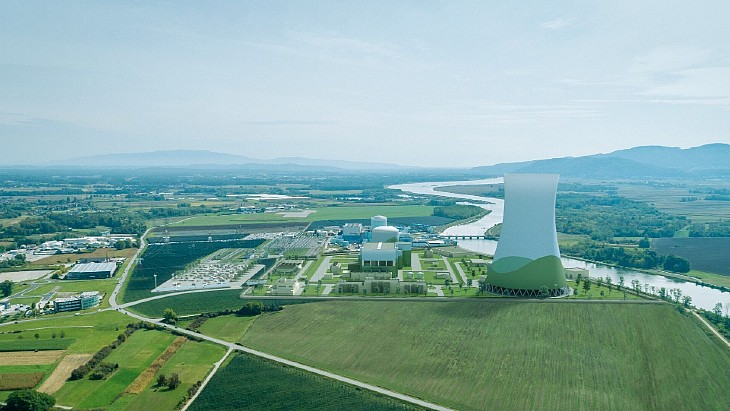 How JEK2 could look (Image: GEN energija)
How JEK2 could look (Image: GEN energija)GEN energija said that its "best internal assessment" - and not based on binding offers from potential suppliers - was overnight construction costs of EUR9300 per kW of installed power: "This means EUR9.3 billion (USD10.1 billion) for a power plant of 1000 MW and EUR15.4 billion for a power plant of 1650 MW. For all calculations and used assumptions, we intend to obtain an international review by a recognised institution before the referendum is held."
In a report of the briefing, GEN energija said its study of the country's power system considered options from 1000 MWe to 2400 MWe - "the key findings are that from the point of view of safety and stability" of the country's power network "the optimal size of JEK2 is up to 1300 MW of net electric power ... and that new sources of balancing system services are needed, especially resources to ensure the manual reserve for frequency recovery".
GEN Energija says the project is of "exceptional strategic importance" enabling decarbonisation and energy security for 80 years or more. It also estimates there will be an estimated 5640 new jobs in 10 years as well as more than 37% share of domestic suppliers for the project.
Slovenia's plan is to build the new nuclear power plant, with up to 2400 MW capacity, next to its existing nuclear power plant, Krško, a 696 MWe pressurised water reactor which generates about one-third of the country's electricity and which is co-owned by neighbouring Croatia. Prime Minister Robert Golob has committed to holding a referendum on the project before it goes ahead, and has suggested it could be held later in 2024.
The current timetable for the project is for a final investment decision to be taken in 2028, with construction beginning in 2032. In October, GEN Energy CEO Dejan Paravan said there were three technology providers being considered for the project - Westinghouse, EDF and Korea Hydro & Nuclear Power - who all had strengths and "the decision will not be easy".
There was a further boost for the project on Thursday when Slovenia's National Assembly passed a resolution on the long-term peaceful use of nuclear energy, including the JEK2 project and the proposal for a referendum.
DOE unveils process for Russian LEU import waivers
23 May 2024
The US Department of Energy (DOE) has issued details of the process for obtaining waivers to allow the import of limited quantities of Russian-origin low-enriched uranium (LEU) to ensure US nuclear plants do not experience supply disruptions when the recently signed prohibition law comes into force.
.jpg?ext=.jpg) (Image: US Nuclear Regulatory Commission)
(Image: US Nuclear Regulatory Commission)
The Prohibiting Russian Uranium Imports Act was signed into law by President Joe Biden earlier this month and will go into effect on 11 August. The ban runs until the end of 2040, but the DOE may waive the ban, under certain conditions, to allow the import of limited amounts of material up until 1 January 2028.
The process released by the DOE allows the Secretary of Energy, in consultation with the Secretary of State and the Secretary of Commerce, to grant a waiver to an importer for specified quantities of Russian LEU if it is determined that no alternative viable source of LEU is available to sustain the continued operation of a nuclear reactor or a US nuclear energy company; or the importation of Russian LEU is in the national interest.
According to the DOE, an import could be in the national interest if it meets one of the following criteria:
- The import is necessary to maintain the viability of a US nuclear energy company that is critical to the US nuclear energy fuel supply chain.
- The import is intended to support an existing arrangement to provide fuel for a nuclear power plant in another country and thus minimise the likelihood of that country seeking a non-US fuel supplier.
Waivers will only be granted for a limited amount of material: 476,536 kg in calendar year 2024; falling to 470,376 kg in 2025; 464,183 kg in 2026 and 459,083 in 2027.
Bloomberg reported earlier this week that Russian state-owned uranium supplier Tenex had sent a notice of force majeure to its US customers giving them 60 days to obtain a waiver. According to that report, Tenex - part of Rosatom - has said it intends to honour its contractual commitments, although delivery schedules could need to be renegotiated for utilities that do not have waivers in place within 60 days.
The full waiver procedure and requirements are available on the DOE website.
US collaboration fortifies nuclear-grade graphite supply chain
23 May 2024
Microreactor startup Radiant Industries and Amsted Graphite Materials have agreed to work together to reduce reliance on foreign sources of nuclear-grade graphite, with Radiant placing a "significant" purchase order for nuclear-grade graphite to support development of its Kaleidos microreactor.
.jpg?ext=.jpg) Envisioning the future: a rendering of the Kaleidos microreactor arriving at the DOME facility (Image: Ryan Seper/Radiant)
Envisioning the future: a rendering of the Kaleidos microreactor arriving at the DOME facility (Image: Ryan Seper/Radiant)
California-based Radiant is developing the 1MW Kaleidos high-temperature gas-cooled portable microreactor, which will use a graphite core and TRISO (tri-structural isotropic) fuel. It was one of three microreactor developers selected last year to receive a share of USD3.9 million US Department of Energy funding to develop and test their designs in the new Demonstration of Microreactor Experiments (DOME) test bed facility at Idaho National Laboratory. Testing is scheduled to begin in 2026, and Radiant says it is aiming for commercial production units in 2028.
However, the company says the success of the Kaleidos demonstration project and the viability of subsequent commercial projects "will depend in critical part on supply certainty and affordability of nuclear-grade, medium and fine grain graphite required for application in a nuclear environment".
Formalising its strategic relationship with Amsted Graphite Materials, which is the largest US-owned synthetic graphite producer, will secure a reliable supply of these materials, Radiant Chief Operating Officer Tori Shivanandan said: "By joining forces to secure a reliable supply of critical graphite materials, we are investing in the success of our Kaleidos Demonstration Project and laying a solid foundation for the future of clean energy in the United States."
Key objectives outlined in the memorandum of understanding (MoU) between the two companies include collaborative efforts in policy advocacy at federal, state and local levels, strategic discussions with third parties, exploration of public-private partnerships with the US government, and participation in testing and R&D programs with universities and government laboratories. The companies say the MoU "underscores the mutual commitment of Radiant and Amsted Graphite Materials to reduce reliance on foreign sources of nuclear-grade graphite, enhance US advanced manufacturing capabilities and bolster the security of US nuclear energy supply chains".
Graphite has been used in nuclear reactor cores as a moderator, slowing down the neutrons released from nuclear fission so that the nuclear chain reaction can be maintained. Most of the power reactors currently in commercial operation - with the exception of the UK's advanced gas-cooled reactor fleet and the Soviet-designed graphite moderated, water cooled RBMK - use light or heavy water as the moderator, but advanced reactor designs, including high-temperature gas-cooled reactors and molten salt reactors, use graphite moderators.
Amsted Graphite Materials signed a partnership agreement to establish an integrated domestic supply chain for nuclear-grade graphite with small modular reactor developer X-energy in 2022. X-energy’s Xe-100 high-temperature gas-cooled reactor is designed to use synthetic graphite as a moderator.
Researched and written by World Nuclear News

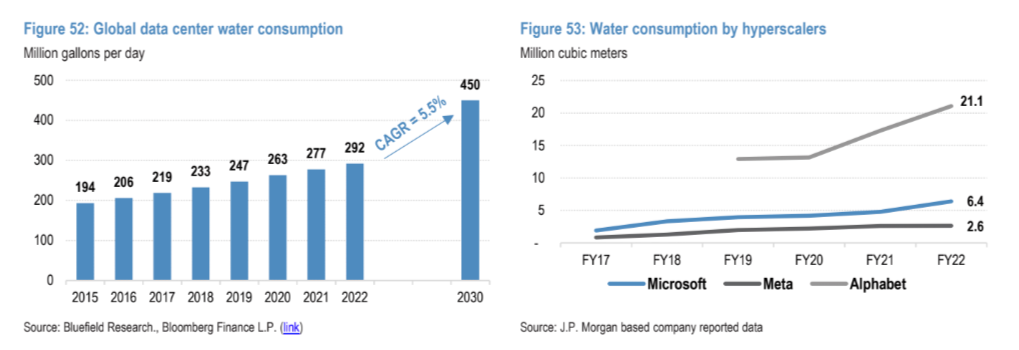
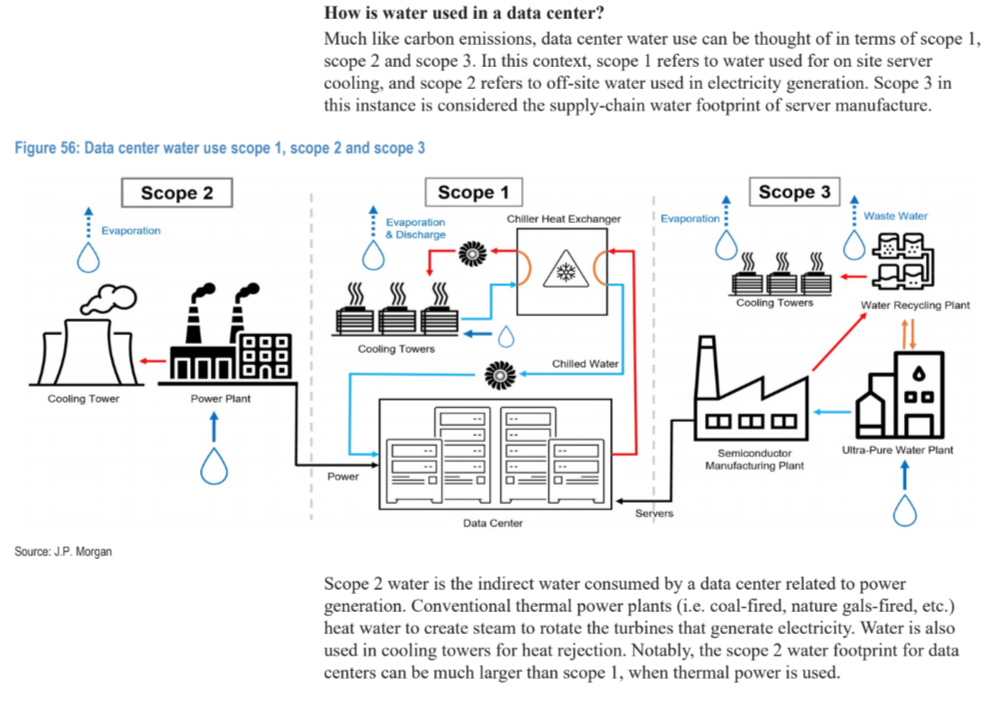
 Hartlepool is now due to operate until 2026 (Image: EDF)
Hartlepool is now due to operate until 2026 (Image: EDF).jpg?ext=.jpg) The spray-in-place liner is delivered remotely via in-pipe robotics (Image: Framatome)
The spray-in-place liner is delivered remotely via in-pipe robotics (Image: Framatome).jpg?ext=.jpg)
 How JEK2 could look (Image: GEN energija)
How JEK2 could look (Image: GEN energija).jpg?ext=.jpg) (Image: US Nuclear Regulatory Commission)
(Image: US Nuclear Regulatory Commission).jpg?ext=.jpg) Envisioning the future: a rendering of the Kaleidos microreactor arriving at the DOME facility (Image: Ryan Seper/Radiant)
Envisioning the future: a rendering of the Kaleidos microreactor arriving at the DOME facility (Image: Ryan Seper/Radiant)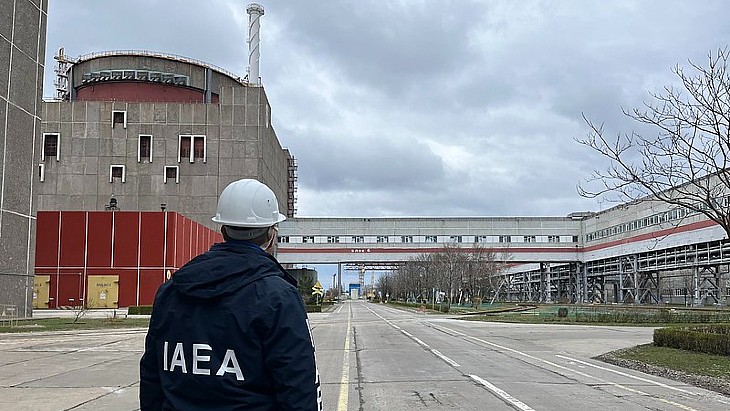 (Image: IAEA)
(Image: IAEA).jpeg?ext=.jpeg) (Image: Kyoto Fusioneering)
(Image: Kyoto Fusioneering)